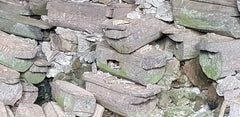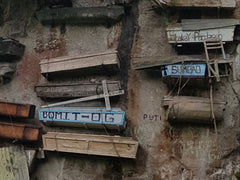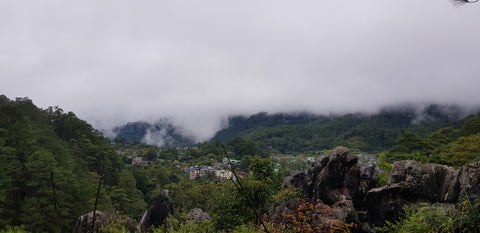Kankana-ey Cave Burial Tradition
A pre-colonial practice up in the Sagada area was to put the coffins in caves instead of burying them in the ground. The departed were placed inside in a fetal position, as a "return to the womb." That is why the coffins are small.

The indigenous peoples of the area (the Kankana-ey, who are collectively referred to as Igorot) have a long burial practice. It involves laying the deceased in their homes for 3 days. On the 3rd day, the deceased is made to sit on a chair, often strapped to it to keep the body upright. That is why you see a chair hanging by the coffins as it can no longer be used. After which, it is easier to put the deceased into the hung coffin in a fetal position.

If you look closely at the photo below, you will spot more hanging coffins. How do they get the coffins up there?
"Bayanihan" spirit is what they will reply. The whole burial tradition, especially the hanging of the coffin, is a community effort. It is a difficult task, but not impossible with the community spirit.

Locals still practice cave burial until today throughout the area, although it is not as widespread. They don't visit the dead at the caves during Undas (All Souls' Day), but they do cook a meal and invite their ancestors ("ninuno") into their homes. When they do come to visit the cave/hanging coffins, during the year, they shout into the valley to let their relative know they are coming and who they are with. The topography of the valley results in an echo of that person's voice.
Due to a surge in tourism, shouting into the valleys where the hanging coffins are has recently been prohibited since some visitors have been found shouting disrespectful words just to hear it echoed back.

When you visit the coffins, remember that it is sacred ground to the locals, and silence should be observed.

Leave a comment
Please note, comments must be approved before they are published